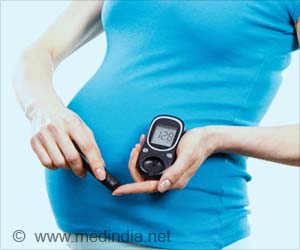Type 2 diabetes epidemics breeds in rural India, China and other areas of the world where poverty restricts the gaining health care, reports mark progress of a low-cost and user-friendly urine test.
Type 2 diabetes epidemics breeds in rural India, China and other areas of the world where poverty restricts the gaining health care, scientists are reporting development of a low cost and user-friendly urine test ideally apt for such areas. The report describing the paper-based device, which also could be adapted for the diagnosis and monitoring of other conditions and the environment, appears in ACS' journal
Analytical Chemistry.
Jan Lankelma and colleagues point out that monitoring glucose levels is important. Although diabetes test strips seem inexpensive, the cost can be prohibitive in areas where people must choose between that and the essentials of life, such as food and shelter. In addition, current handheld diabetes monitoring devices measure glucose levels in blood, which requires a pin-prick to a finger — something that could deter patients from taking the measurements. To address these challenges, the researchers built a new type of glucose monitor — one that detects glucose levels in urine (which is easy to obtain) and is made from inexpensive materials, such as paper.
The device consists of three electrodes, a buffer solution, a piece of paper (or nitrocellulose) and a plastic dish. The sample is injected onto the paper with a slightly modified medical syringe, and the solution moves along the paper by gravity and capillary action. An enzyme called glucose oxidase is already on the paper, and it reacts with glucose in the sample to produce hydrogen peroxide, which is detected by the electrodes. The system can be built quickly, is inexpensive and produces results similar to those from a more expensive, commercially available clinical instrument. The authors state that the device could be used not only in a clinical lab, but it could also be further developed for applications as diverse as analyzing food quality and environmental monitoring.
Source-Eurekalert

 MEDINDIA
MEDINDIA




 Email
Email










